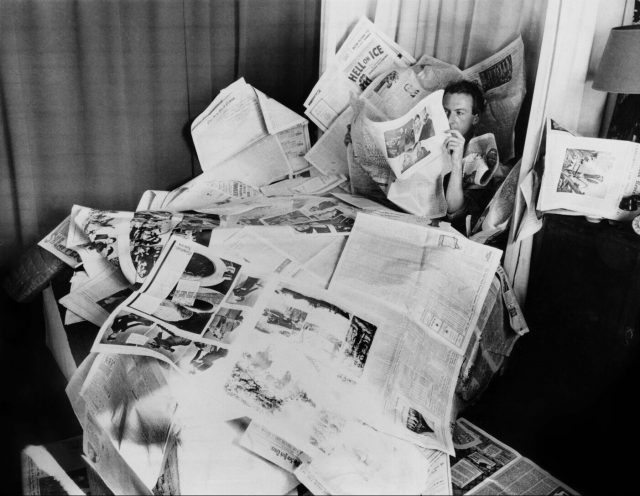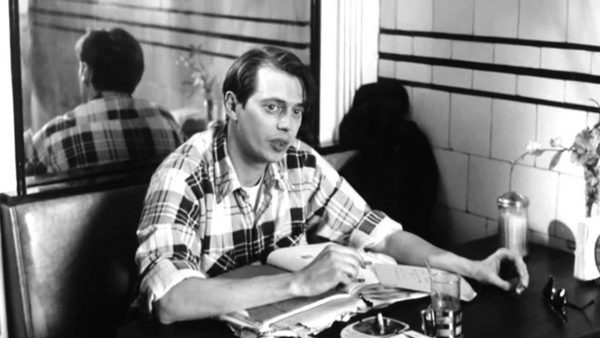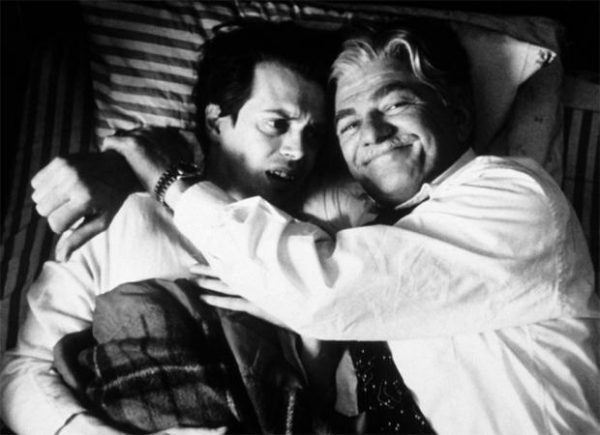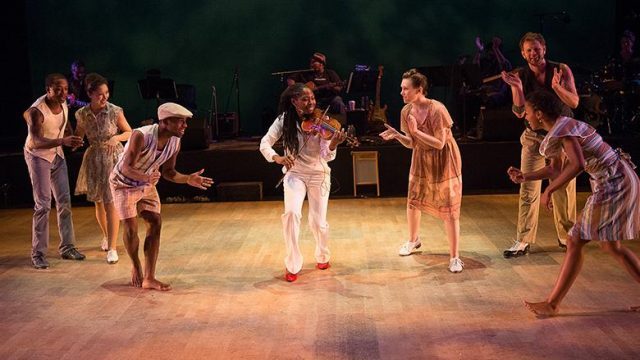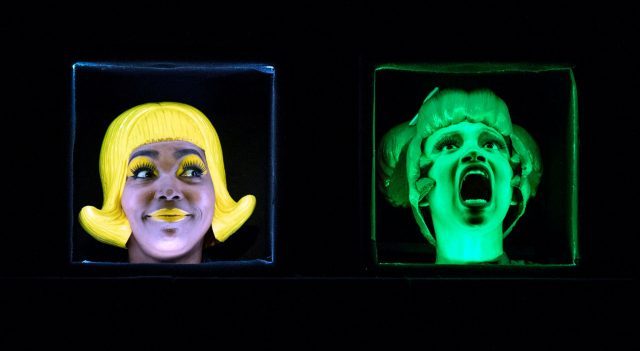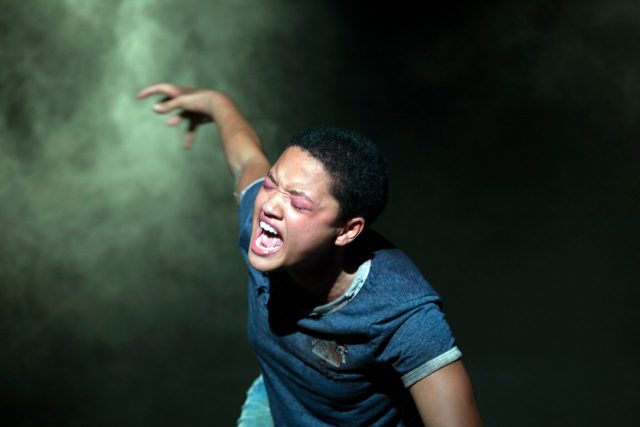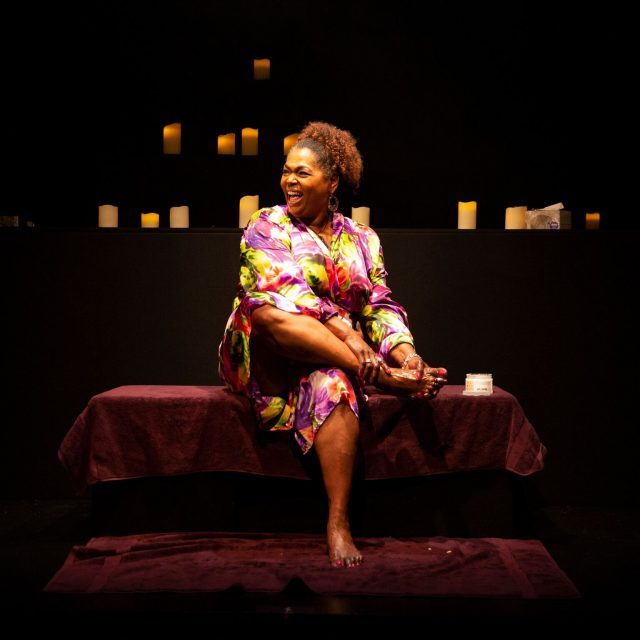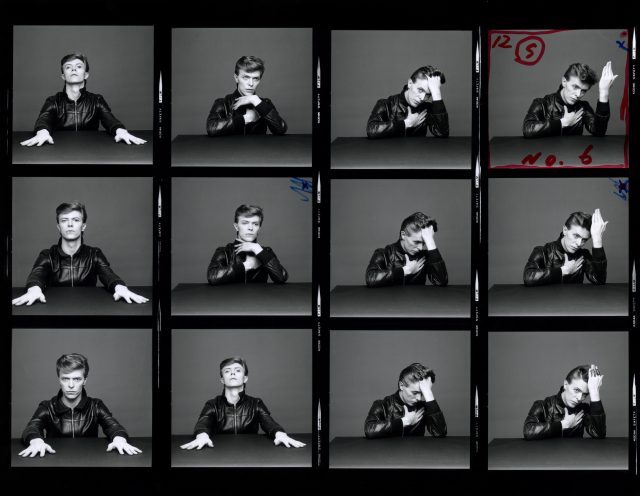
Heroes contact sheet, 1977 (photograph by Masayoshi Sukita. © Sukita/The David Bowie Archive)
Brooklyn Museum
200 Eastern Parkway at Washington St.
Morris A. and Meyer Schapiro Wing and Iris and B. Gerald Cantor Gallery, fifth floor
Daily through July 15, $20-$35
212-864-5400
www.brooklynmuseum.org
Any major career survey of gender-bending, genre-redefining, multidisciplinary, intergalactic superstar David Bowie must be innovative, unique, cutting-edge, and unusual, for nothing less would do justice to the man born David Jones in Brixton in 1947. The Brooklyn Museum’s “David Bowie is,” the most successful exhibition in the institution’s history, is just that, an illuminating exploration of the actor, musician, singer-songwriter, fashion icon, painter, video artist, husband, father, and more. Given unprecedented access to Bowie’s personal archive, the wide-ranging, highly ambitious, immersive multimedia presentation collects hundreds of items, from sketches of his parents to his baby pictures, from handwritten lyric sheets to books that influenced him, from posters of his early bands to drawings of his costumes and sets for live performances, among a multitude of other memorabilia and paraphernalia. One section is devoted to a single song, “Space Oddity,” with video, photographs, screenprints, album artwork, music sheets, related toys, and more, another looks at his various stage personas (the Thin White Duke, Ziggy Stardust, Hamlet), and another explores his work in film and theater, including Labyrinth, The Man Who Fell to Earth, The Elephant Man, The Last Temptation of Christ, Basquiat, and The Image. A five-minute clip from the 1969 promotional film Love You till Tuesday features “The Mask (A Mime),” in which Bowie performs as a mime.

Original lyrics for “Ziggy Stardust,” by David Bowie, 1972 (Courtesy of The David Bowie Archive. Image © Victoria and Albert Museum)
Organized by the Victoria and Albert Museum in London, the show gets everything right that MoMA’s 2015 disaster, “Björk,” got wrong. Purchasing timed tickets in advance, visitors traverse the exhibition at their own pace and in whatever order they would like, wearing headphones that, in a move of genius, react to where they are physically. Thus, when you’re in front of a video screen depicting Bowie performing “The Man Who Sold the World” on Saturday Night Live, that is what you are hearing. Turn around and take a few steps in any direction and the audio will switch to whatever you are now looking at, whether it’s an interview with designer Kansai Yamamoto, Bowie’s preparations for the never-made Diamond Dogs film, or a small room dedicated to his final record, Blackstar. There is something to experience in almost every nook and cranny, so sometimes it is fun to let the audio guide you, attracted by what you hear instead of what you see.
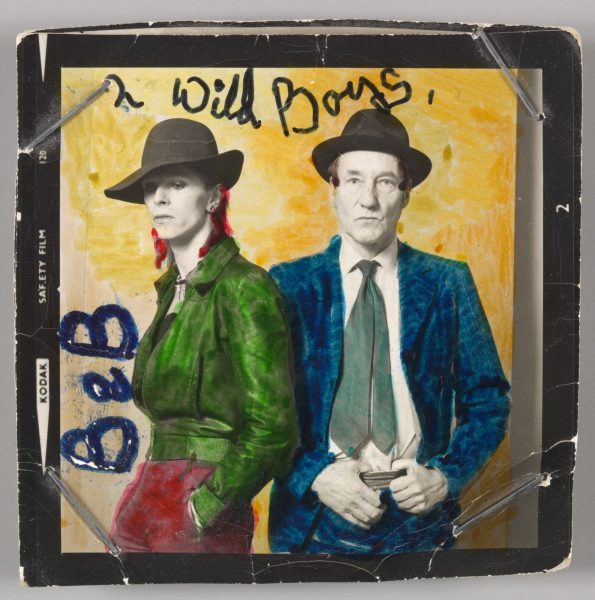
David Bowie with William Burroughs, February 1974 (Photograph by Terry O’Neill with color by David Bowie. Courtesy of The David Bowie Archive. Image © Victoria and Albert Museum)
Among the items to watch out for are a series of line drawings that serves as an artistic conversation between Bowie and Laurie Anderson; Guy Peellaert’s original painting for the Diamond Dogs album cover; the original lyrics to “Rebel, Rebel”; a Bowie painting of Iggy Pop in a Berlin landscape; a letter from Jim Henson to Bowie about Labyrinth; a John Lennon sketch (“For Video Dave . . .)”; Bowie’s script for the Lazarus musical; a Bowie doodle on a cigarette pack; a telefax from Elvis Presley; and Bowie’s charcoal drawing of his adopted home, New York City. The exhibition culminates in high style in a room blasting the original “Heroes” video and live footage of “Rebel, Rebel” from the Reality Tour and “Heroes” from the Concert for New York City, headphones off, everyone experiencing transcendence as one. “Though nothing, nothing will keep us together / We can beat them, forever and ever / Oh, we can be heroes just for one day,” Bowie declares, leaving behind a remarkable legacy that will continue to keep people together, believing that every one of us has the possibility of being a hero. On July 7 (exhibition ticket required, 8:00), Resonator Collective will perform a Bowie tribute, on July 14 ($16, 2:00), there will be a conversation between Daphne Brooks and Jack Halberstam about Bowie’s lasting influence, and on July 15 ($16, 2:00), the final day of the exhibit, the museum hosts the discussion “The Soulfulness of David Bowie” with Carlos Alomar, Robin Clark, and Christian John Wikane. After seeing the exhibit, you’ll have yet more ways to end the already tantalizing sentence fragment “David Bowie is . . .”
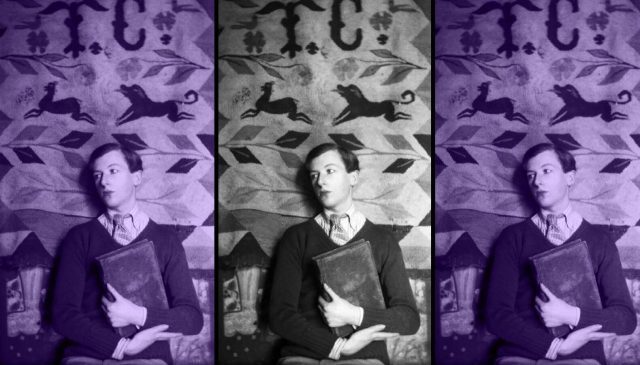
 Love, Cecil is a refreshing, invigorating documentary about Oscar- and Tony-winning fashion and war photographer, diarist, production designer, painter, portraitist, costume designer, illustrator, and one of the most influential dandies of the twentieth century, Sir Cecil Beaton. Writer-director Lisa Immordino Vreeland has followed up her first two feature-length films,
Love, Cecil is a refreshing, invigorating documentary about Oscar- and Tony-winning fashion and war photographer, diarist, production designer, painter, portraitist, costume designer, illustrator, and one of the most influential dandies of the twentieth century, Sir Cecil Beaton. Writer-director Lisa Immordino Vreeland has followed up her first two feature-length films, 